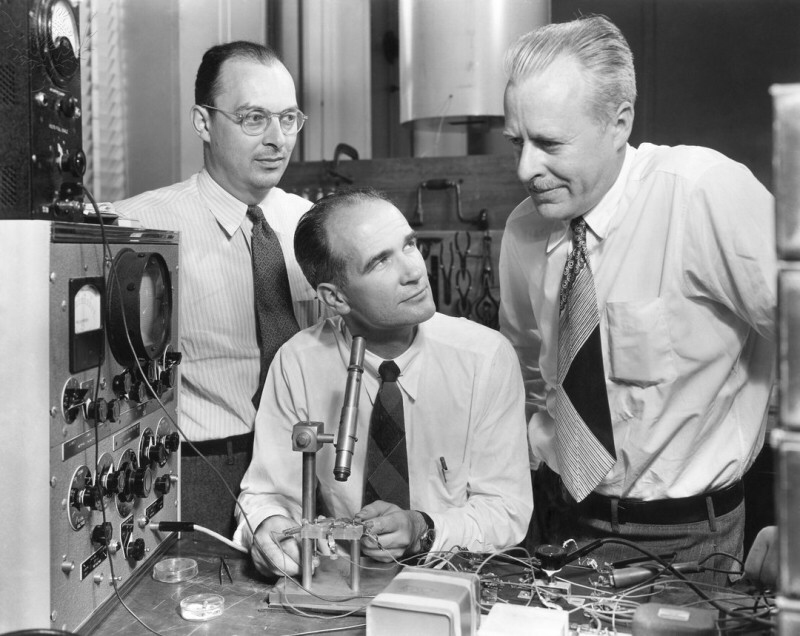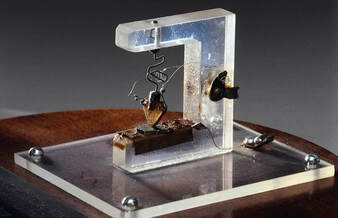The Transistor

ICourtesy of IPWatchdog.com
This is where William Shockley, Walter Brattain, John Bardeen where tasked by Bell telephone labs to work on making a semiconductor device that would replace vacuum tubes. Starting in 1945 they would work for two years experimenting and trying different models and combinations of different metals and materials. But it wouldn’t be until the winter of 1947 that the first transistor was made. After many failures the team was discouraged and there leader had left them to go home. While he was gone John Bardeen had a historic insight that allowed him to create the fist transitrer. This was the Point Contact Transistor. John Bardeen relized that what was known about how electrons worked in crystals was wrong so he built a device that would break the rules. It was made of strips of gold foil on a plastic triangle, pushed down into contact with a slab of germanium. This would allow electrons to break through the surface of the material making signals go through the device. Scockley was furious that he had not seen the device he helped make sucsessfully work so he made a better one based on Bardeens creation. In the end the all they got the patent for the device but at the time there was little press or popularity.
